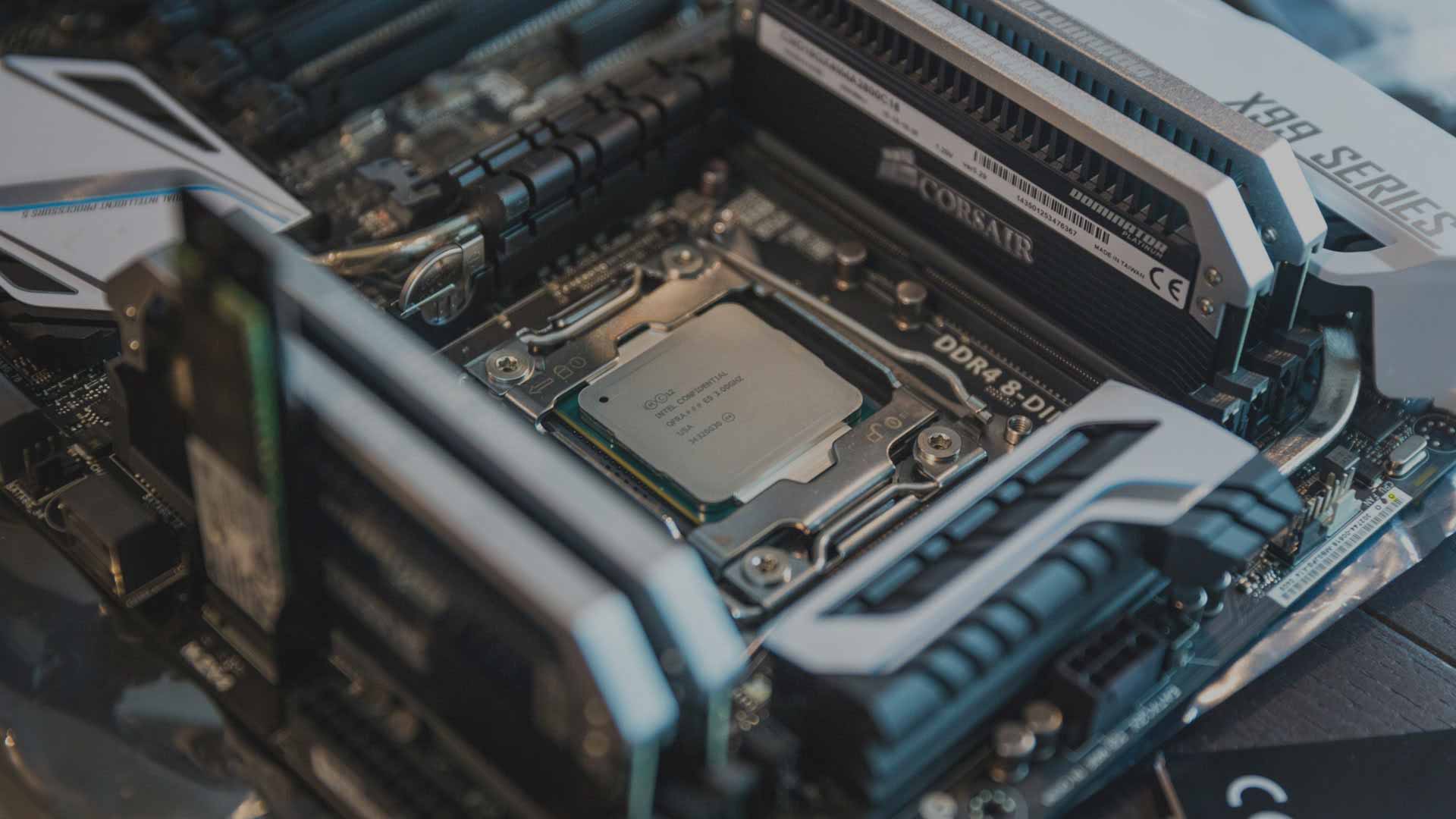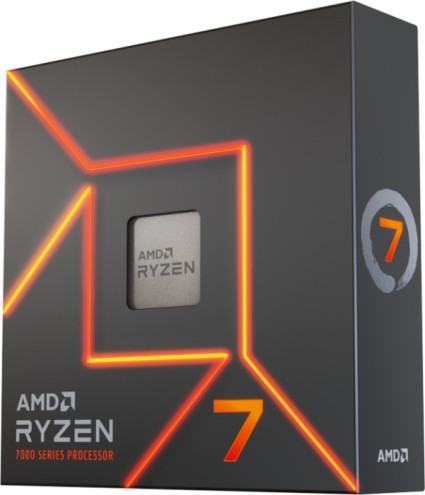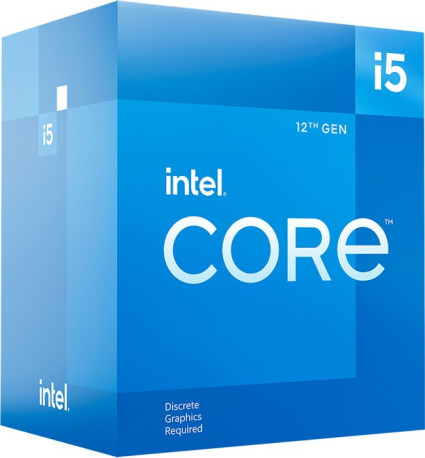
AMD Ryzen 7 7700X vs. Intel Core i5-12400F
In diesem Vergleich von AMD Ryzen 7 7700X versus Intel Core i5-12400F vergleichen wir die technischen Daten der beiden GPUs. Welche Grafikkarte ist schneller? Hier gibt es FPS & Benchmarks in Gaming und Anwendungen. Außerdem Daten zu Verbrauch, Effizienz (FPS pro Watt) und Preis-Leistung (FPS pro Euro).

Allgemeine Informationen
| Günstigster Preis |
|
|
| Serie | AMD Ryzen 7000 | Intel Core i-12000 |
| Chip-Architektur | Zen 4 | Golden Cove |
| Codename | Raphael | Alder Lake-S |
| Produktname | AMD Ryzen 7 7700X | Intel Core i5-12400F |
Spezifikationen
Die Anzahl der Rechenkerne, die maximale Taktrate und die Größe des Cache können sich auf die Leistung in Spielen und Anwendungen auswirken. Mit 8 Kernen bietet der AMD Ryzen 7 7700X deutlich mehr Kerne als der Intel Core i5-12400F mit 6 Rechenkernen. Der maximale Takt liegt beim AMD Ryzen 7 7700X mit 5.40 GHz höher als beim Intel Core i5-12400F mit 4.40 GHz. Der Cache ist beim AMD Ryzen 7 7700X mit 8 MB L2-Cache + 32 MB L3-Cache zu 7.5 MB L2-Cache + 18 MB L3-Cache deutlich höher als beim Intel Core i5-12400F.
| Kerne (Gesamt) | 8 | 6 |
| Anzahl P-Cores | 8C | 6C |
| Anzahl E-Cores | - | - |
| Basis-Takt | 4.50 GHz | 2.50 GHz |
| Takt P-Cores | 4.50 GHz | 2.50 GHz |
| Takt E-Cores | - | - |
| Turbo-Takt | 5.40 GHz | 4.40 GHz |
| Turbo P-Cores | 5.40 GHz | 4.40 GHz |
| Turbo E-Cores | - | - |
| Gesamter L2-Cache | 8 MB | 7.5 MB |
| Gesamter L3-Cache | 32 MB | 18 MB |
| Fertigung | TSMC 5 nm (CPU), TSMC 6 nm (I/O) | Intel 7 |
| Rechenleistung | - | - |
| Leistungsaufnahme (TDP) | 105W | 65W (Processor Base Power) 117W (Maximum Turbo Power) |
Mainboard-Kompatibilität
Während der AMD Ryzen 7 7700X den AMD AM5 Sockel nutzt, ist der Intel Core i5-12400F mit Mainboards für den Sockel Intel 1700 kompatibel. Die genaue Chipsatz-Eignung und die unterstützten PCIe-Lanes können Sie der Tabelle entnehmen.
| Sockel | AMD AM5 | Intel 1700 |
| Chipsatz-Eignung | A620, B650, B650E, B840, B850, X670, X670E, X870, X870E (modellabhängig: PRO 600, PRO 665, X600) | B660, B760, H610, H610E, H670, H770, Q670, Q670E, R680E, W680, Z690, Z790 |
| PCIe-3.0-Lanes | - | - |
| PCIe-4.0-Lanes | - | 4x |
| PCIe-5.0-Lanes | 28x (verfügbar: 24) | 16x |
RAM-Kompatibilität
Während Sie beim AMD Ryzen 7 7700X bis zu 192 GB vom Typ DDR5 im Dual Channel verbauen können, unterstützt der Intel Core i5-12400F bis zu 128 GB DDR4/DDR5 Arbeitsspeicher.
| Speicher-Controller | DDR5 | DDR4/DDR5 |
| Anzahl Speicherkanäle | Dual Channel | Dual Channel |
| max. Speichermenge | 192 GB | 128 GB |
| ECC-Unterstützung | ✓ | - |
Grafik
| iGPU | ✓ | - |
| iGPU-Modell | AMD Radeon Graphics | - |
| iGPU-Takt | 0,40-2,20GHz | - |
| iGPU-Einheiten | 2CU/128SP | - |
| iGPU-Rechenleistung | 0.56 TFLOPS (FP32) | - |
| iGPU-Architektur | RDNA 2, Codename "Raphael" | - |
| iGPU-Interface | DP 2.0, HDMI 2.1 | - |
| iGPU-Funktionen | 4x Display Support, AMD Eyefinity, AMD FreeSync 2, AV1 decode, H.265 encode/decode, VP9 decode, DirectX 12.1, OpenGL 4.5, Vulkan 1.0 | - |
Sonstiges
| Freier Multiplikator | ✓ | - |
| Stepping | RPL-B2 | C0/H0, Spec Code: SRL4W/SRL5Z |
| Heatspreader-Kontaktmittel | Metall/verlötet | Metall/verlötet |
| Temparatur max. | 95°C (Tjmax) | 100°C (Tjunction) |
| Fernwartung | - | - |
| Einführung | 2022/Q3 (27.9.2022) | 2022/Q1 (4.1.2022) |
| Herstellergarantie | 3 Jahre bei AMD® Boxed-Prozessoren (Info EN) | 3 Jahre bei Intel® Boxed-Prozessoren (Info DE/Info EN) |
CPU-Funktionen
| AES-NI | ✓ | ✓ |
| AVX | ✓ | ✓ |
| AVX2 | ✓ | ✓ |
| Boot Guard | - | ✓ |
| CET | - | ✓ |
| DL Boost | - | ✓ |
| EIST | - | ✓ |
| GNA 3.0 | - | ✓ |
| Idle States | - | ✓ |
| Instruction Set | - | ✓ |
| ISM | - | ✓ |
| MBEC | - | ✓ |
| Optane Memory Support | - | ✓ |
| OS Guard | - | ✓ |
| Secure Key | - | ✓ |
| Speed Shift | - | ✓ |
| SSE4.1 | ✓ | ✓ |
| SSE4.2 | ✓ | ✓ |
| Thermal Monitoring | - | ✓ |
| VMD | - | ✓ |
| VT-d | - | ✓ |
| VT-x | - | ✓ |
| VT-x EPT | - | ✓ |
| XD Bit | - | ✓ |
Spiele

- AMD Ryzen 7 7700XAVG100.00 %1%100.00 %
- Intel Core i5-12400FAVG72.09 %1%75.12 %

- Intel Core i5-12400FAVG113.4 FPS1%79.5 FPS
- AMD Ryzen 7 7700XAVG257.5 FPS1%177.9 FPS

- Intel Core i5-12400FAVG389.4 FPS1%227.7 FPS
- AMD Ryzen 7 7700XAVG699.4 FPS1%340.6 FPS

- Intel Core i5-12400FAVG119 FPS1%78 FPS
- AMD Ryzen 7 7700XAVG168.1 FPS1%102.8 FPS

- Intel Core i5-12400FAVG166 FPS1%111.3 FPS
- AMD Ryzen 7 7700XAVG193.8 FPS1%146.9 FPS

- Intel Core i5-12400FAVG118.2 FPS1%85.3 FPS
- AMD Ryzen 7 7700XAVG140 FPS1%94 FPS

- Intel Core i5-12400FAVG184 FPS1%114.1 FPS
- AMD Ryzen 7 7700XAVG253.2 FPS1%146.3 FPS

- Intel Core i5-12400FAVG66.5 FPS1%50.5 FPS
- AMD Ryzen 7 7700XAVG78 FPS1%59.9 FPS

- Intel Core i5-12400FAVG191.2 FPS1%108.8 FPS
- AMD Ryzen 7 7700XAVG244.4 FPS1%128.4 FPS

- AMD Ryzen 7 7700XAVG0.93 FPSIntel Core i5-12400FAVG1.53 FPS

- AMD Ryzen 7 7700XAVG3.06 FPSIntel Core i5-12400FAVG3.09 FPS
Produktivität
Produktivität

- AMD Ryzen 7 7700XAVG100.00 %Intel Core i5-12400FAVG65.59 %

- AMD Ryzen 7 7700XPKT121766 PunkteIntel Core i5-12400FPKT63779 Punkte

- AMD Ryzen 7 7700XPKT1506 PunkteIntel Core i5-12400FPKT1028 Punkte

- AMD Ryzen 7 7700XPKT913 PunkteIntel Core i5-12400FPKT605 Punkte

- AMD Ryzen 7 7700XSEK273 SekundenIntel Core i5-12400FSEK499 Sekunden

- AMD Ryzen 7 7700XPKT1104 PunkteIntel Core i5-12400FPKT616 Punkte

- AMD Ryzen 7 7700XPKT3090 PunkteIntel Core i5-12400FPKT2247 Punkte

- AMD Ryzen 7 7700XPKT15529 PunkteIntel Core i5-12400FPKT10438 Punkte

- AMD Ryzen 7 7700XSEK69 SekundenIntel Core i5-12400FSEK121 Sekunden




